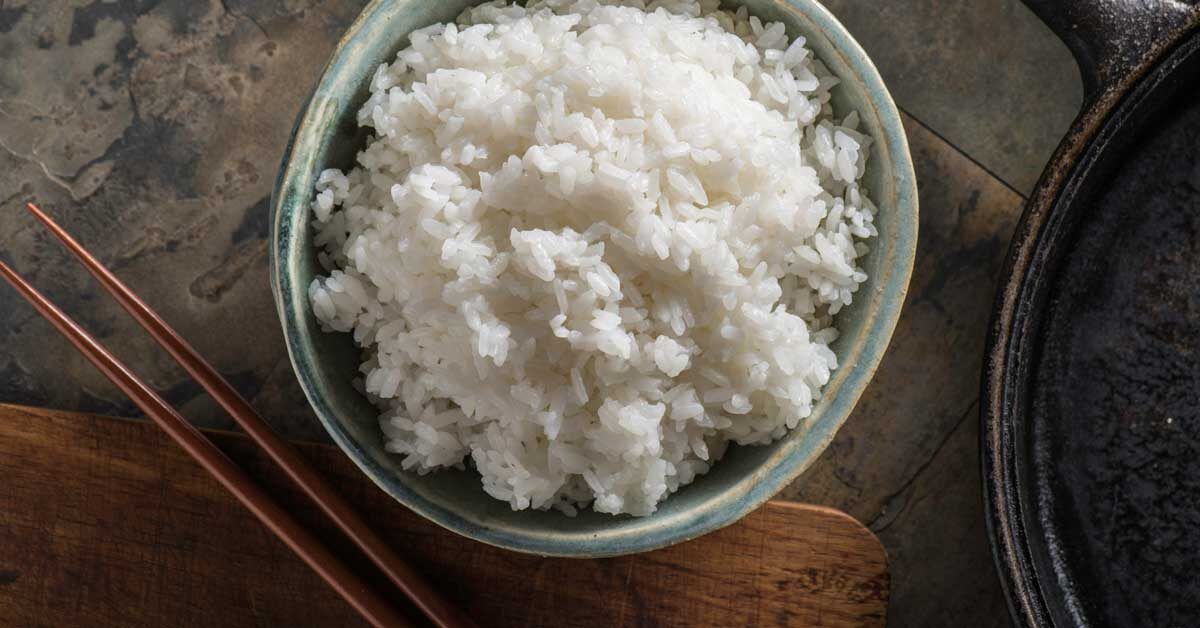White rice is not inherently inferior to brown rice, despite myths, and it offers nutritional benefits, including some minerals. It’s low in fiber, fat, and calories and can be paired with fiber-rich foods to boost a meal’s nutritional profile.
However, the nutritional difference between white rice and brown rice lies in the intact germ and bran of brown rice, which contribute fiber, fat, protein, and various B vitamins, iron, phosphorus, potassium, and zinc. Brown rice is considered healthier than white rice in terms of nutrient content.
Nonetheless, white rice is still considered nutritious as it is often enriched with added nutrients like iron and B vitamins.
:max_bytes(150000):strip_icc()/rice_annotated-b0a0aa51dc264e05b1d50b98c928147e.jpg)
Is White Rice Healthy?
White rice is not inherently inferior to brown rice, despite myths. It offers
the
Nutritional Benefits Of White Rice
Contrary to popular belief, white rice does offer some nutritional benefits. While it is lower in fiber compared to its brown counterpart, white rice is still a good source of energy and contains essential vitamins and minerals. It is rich in carbohydrates, which are the body’s primary source of energy. Additionally, white rice contains minerals like iron and magnesium, which play an essential role in various bodily functions.
White Rice In A Balanced Diet
Incorporating white rice into a balanced diet can be a healthy choice. It can provide a quick and easy source of energy, making it suitable for athletes and individuals with high energy demands. White rice’s low fat and calorie content also makes it a convenient option for those trying to maintain or lose weight. However, it is essential to note that moderation is necessary, and white rice should be consumed in conjunction with other nutrient-dense foods.
Comparing White Rice To Brown Rice
White rice and brown rice have different nutritional profiles. Brown rice is healthier because it retains its bran and germ, which contain valuable nutrients like fiber, protein, and B vitamins. On the other hand, white rice undergoes a refining process that removes the bran and germ, resulting in a loss of these nutrients. However, white rice is often enriched with nutrients such as iron and B vitamins, which help compensate for the loss during refining.

What does the research say about it?
White rice is not inherently inferior to brown rice, contrary to popular belief. It offers nutritional benefits, including some minerals. It is low in fiber, fat, and calories, making it a viable option when paired with fiber-rich foods to enhance a meal’s nutritional value.
The Myth That White Rice Is Inferior To Brown Rice
There is a common misconception that white rice is inferior to brown rice in terms of nutritional value. However, research suggests that this is not entirely true. While it is true that brown rice contains more fiber, fat, and protein than white rice, white rice also offers several nutritional benefits.
For example, white rice is low in fat and calories, making it a suitable option for those looking to maintain or lose weight. It is also a good source of various minerals, such as iron and B vitamins, which are often added during the enrichment process.
It’s important to note that the processing of brown rice to convert it into white rice removes the germ and bran, which are rich in nutrients. However, this does not make white rice inherently unhealthy or devoid of nutrients.
White Rice And Inflammation
Contrary to popular belief, white rice does not have a direct association with inflammation. Inflammation is mainly caused by consuming foods that are high in refined carbohydrates, such as white bread, pasta, and processed snack foods.
While white rice is a refined carbohydrate, it does not pose the same risk of inflammation as other processed foods. Studies have shown that when white rice is consumed as part of a balanced diet with other anti-inflammatory foods, it does not contribute to inflammation.
To reduce the potential inflammatory effects of white rice, it is recommended to pair it with fiber-rich foods, such as vegetables or legumes. This helps slow down the digestion process and prevents rapid spikes in blood sugar levels.
Types Of Rice And Their Health Benefits
There are various types of rice available, and each has its own set of health benefits. Whole-grain rice is often regarded as the healthiest option.
Whole grain rice, such as brown or black rice, contains germ and bran and is rich in fiber, vitamins, and minerals. These nutrients contribute to improved digestion, increased satiety, and better overall health.
On the other hand, white rice is more processed and lacks germs and bran. However, as mentioned earlier, it is still a nutritious option due to the added nutrients during the enrichment process.
Overall, incorporating various rice types into your diet can provide a range of health benefits. It’s recommended to focus on whole-grain rice options most of the time and pair white rice with other nutrient-rich foods to enhance its nutritional profile.

Frequently Asked Questions: Is White Rice Healthy? What does the research say about it?
Is There Anything Healthy About White Rice?
White rice offers some nutritional benefits, including minerals like magnesium, phosphorous, manganese, selenium, iron, folic acid, thiamin, and niacin. It is low in fiber, fat, and calories but can be made healthier by pairing it with fiber-rich foods.
Is Rice An Inflammatory Food?
White rice is not inflammatory. It is low in fiber, fat, and calories and can provide some nutritional benefits. It can be paired with fiber-rich foods to enhance its nutritional value.
Which Type Of Rice Is The Healthiest?
White rice is not inherently inferior to brown rice and offers nutritional benefits. It is low in fiber, fat, and calories, and can be paired with fiber-rich foods for a nutritious meal. Brown rice and black rice are regarded as the healthiest options due to their whole grain nature.
Why Is Brown Rice Healthier Than White Rice?
Brown rice is healthier than white rice because it contains fiber, fat, and protein, which are lacking in white rice. Brown rice also has more nutrients like B vitamins, iron, phosphorus, potassium, and zinc.
Conclusion
While white rice may not be as nutrient-dense as brown rice, it still offers some nutritional benefits. It is low in fiber, fat, and calories, making it a good option for those with digestive issues. Additionally, white rice can be paired with fiber-rich foods to enhance its nutritional profile.
So, although brown rice is often considered healthier, white rice can still be part of a balanced diet.

